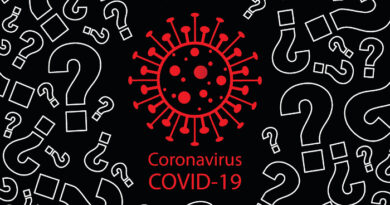DARPA, Insects, Mad Science, and Us: Nowhere to Hide
STORY AT-A-GLANCE
- Irresponsible use of new and very advanced technologies by the military is life-threatening
- Engineered viruses can be used to edit genes in a target species, including in a heritable manner
- “Insect Allies” is a DARPA program designed to genetically modify mature plants in a live environment by releasing insects infected with genetically modified viruses
- Some scientists, although on board with genetic modification in principle, are questioning DARPA’s motives and raising concerns
- Researchers in Singapore, as well as DARPA in the U.S. have developed “remote-controlled insects”
BREAKING NEWS: The craziest crazies have somehow escaped the asylum and installed themselves in high positions of power. Insane, they are coming up with one bad idea after another and barking orders at us, mad shine in their eyes and saliva coming out of their mouths. They are crazy — and in charge of institutions, schools, newspapers and armies.
They are running around with their high-tech pistols filled with high-tech poisons and their little sadistic CRISPR scissors. They are crazy — yes, they are crazy — and they are killing us slowly, and sometimes not so slowly. Welcome to the future where toxicity is health and the old crazy is the new normal. We are not crazy — they are crazy — and they have been from the beginning. And in 2020, they stopped pretending. What now?
Sweet idea, right? Well, DARPA thought so, and so in 2016, they started a project called “Insect Allies” that is designed to do that. (This is a different project from Oxitec’s controversial release of GM mosquitos.) DARPA’s official story is that in the name of national security, a good way to protect the American crops from potential threats is to genetically modify them using GM viruses as genetic modifiers and insects as flying syringes. And that they just need to test it!

In a 2016 release titled, “DARPA Enlists Insects to Protect Agricultural Food Supply,” the agency stated:
“A new DARPA program is poised to provide an alternative to traditional agricultural threat response, using targeted gene therapy to protect mature plants within a single growing season.
DARPA proposes to leverage a natural and very efficient two-step delivery system to transfer modified genes to plants: insect vectors and the plant viruses they transmit. In the process, DARPA aims to transform certain insect pests into ‘Insect Allies,’ the name of the new effort.”
“‘Insect Allies’ three technical areas — trait design, insect vector optimization, and selective gene therapy in mature plants — layer together to support the goal of rapidly transforming mature plants to protect against natural or intentional agricultural disruption without the need for extensive infrastructure. The foundational knowledge and generalizable tools developed under the program could also support future agricultural innovation.”
Some suspicious peasants may foolishly wonder: What will happen in the short term and in the long term to the people who eat those plants, to the people and animals possibly bitten by those insects, to the wild insects who mate with the infected insects, and to all other life in the area and beyond that may get impacted? What ridiculous nonsense. Here is the answer, peasant: No one knows — and importantly, no one cares. Any more questions?
The first Insect Allies funded paper, titled, “Multiplexed heritable gene editing using RNA viruses and mobile single guide RNAs,” was published in 2020. Please note the word “heritable” in the headline. The paper stated:
“Mutant progeny are recovered in the next generation at frequencies ranging from 65 to 100%; up to 30% of progeny derived from plants infected with a virus expressing three sgRNAs have mutations in all three targeted loci.”
DARPA never disclosed if they tested this program outside of greenhouses.



